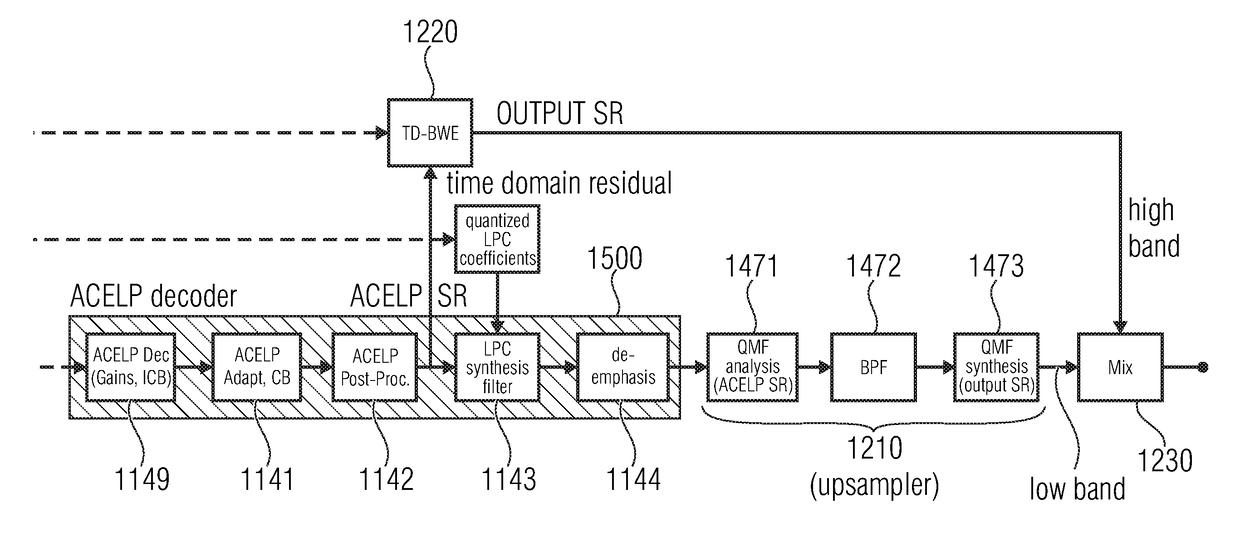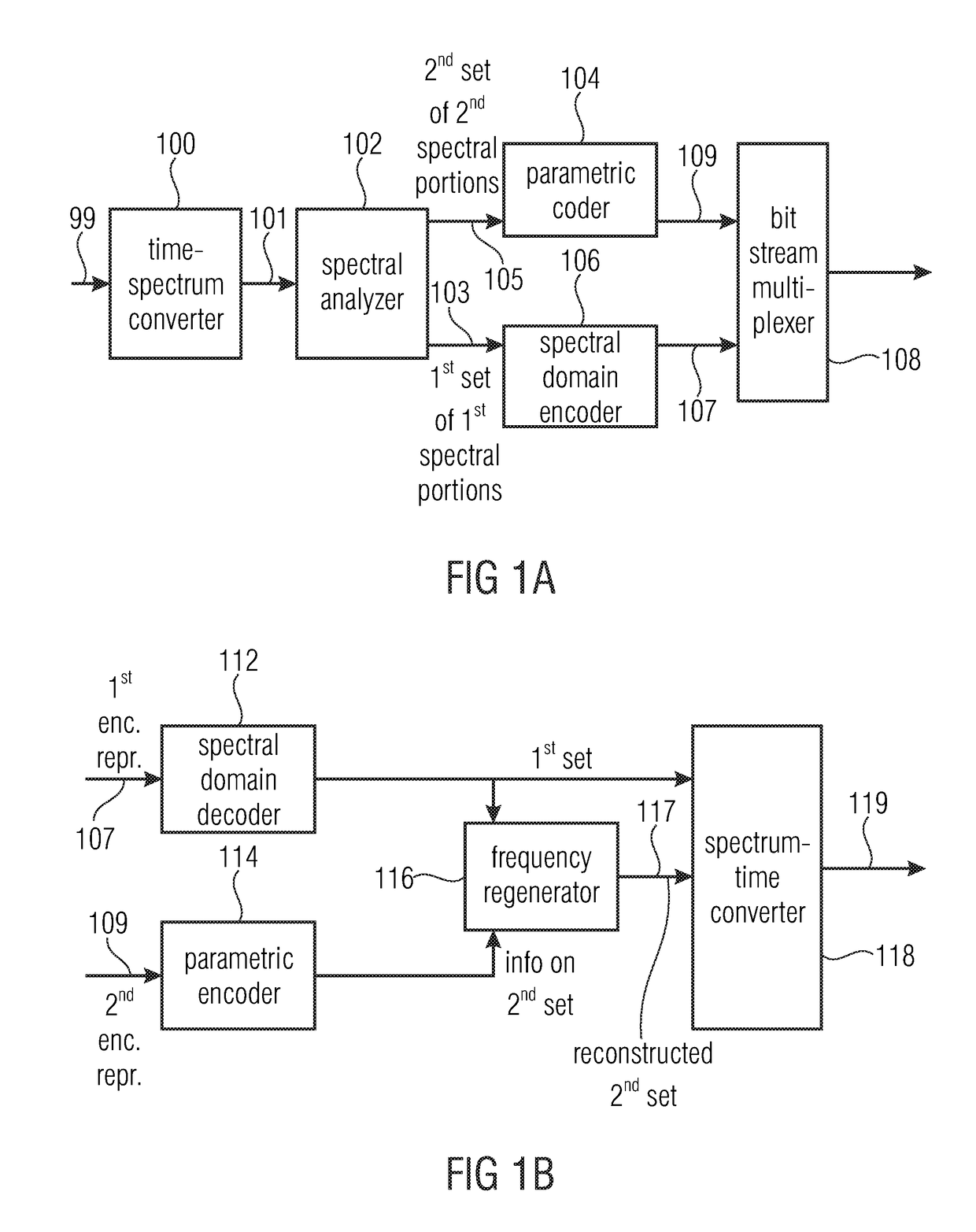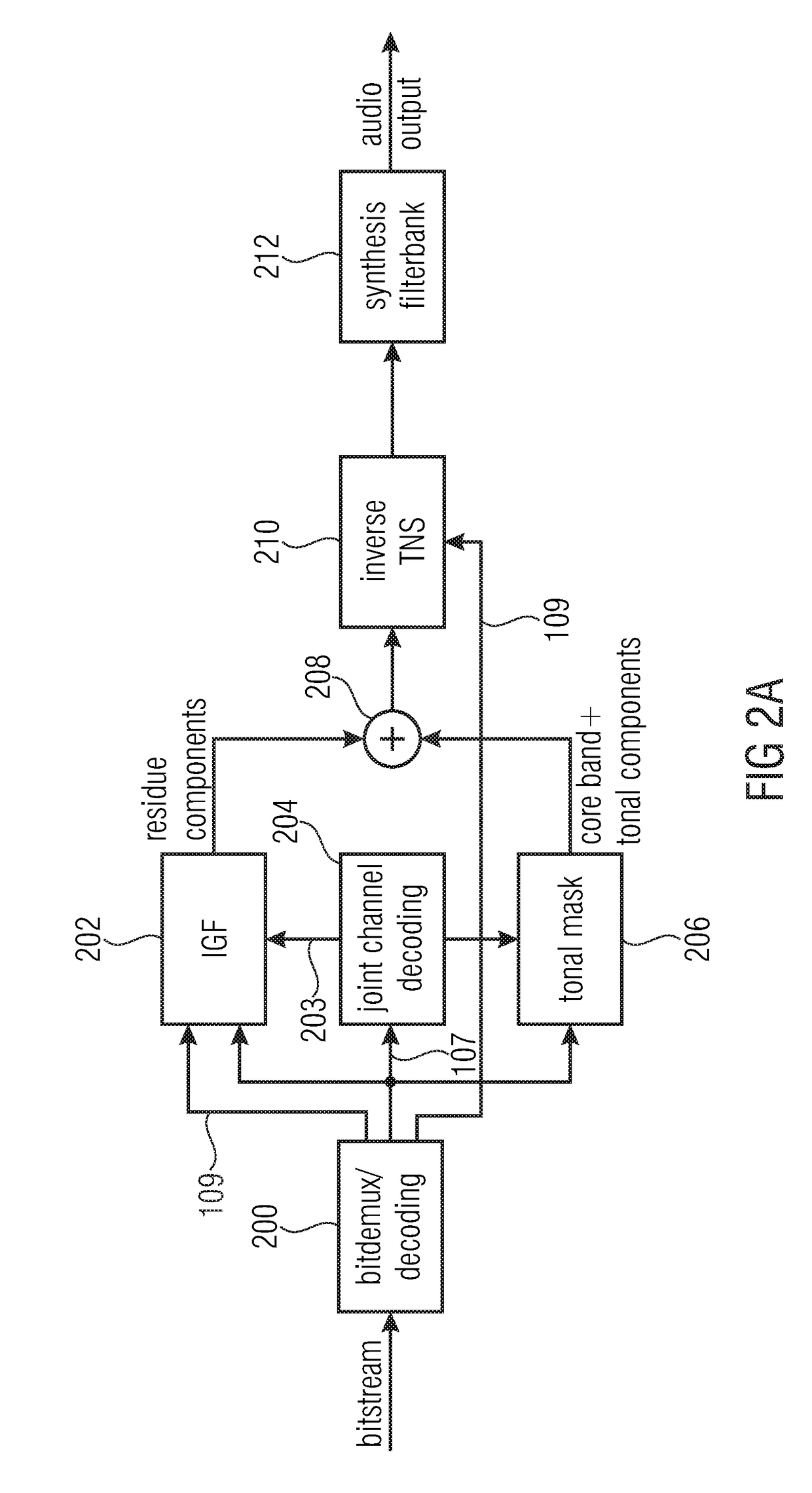Audio encoder and decoder using a frequency domain processor , a time domain processor, and a cross processing for continuous initialization
a frequency domain and encoder technology, applied in the field of audio signal encoding and decoding, can solve the problems of reducing audio quality, reducing the accuracy of known frequency domain encoders, and reducing audio quality
- Summary
- Abstract
- Description
- Claims
- Application Information
AI Technical Summary
Benefits of technology
Problems solved by technology
Method used
Image
Examples
Embodiment Construction
[0085]FIG. 6 illustrates an audio encoder for encoding an audio signal comprising a first encoding processor 600 for encoding a first audio signal portion in a frequency domain. The first encoding processor 600 comprises a time frequency converter 602 for converting the first input audio signal portion into a frequency domain representation having spectral lines up to a maximum frequency of the input signal. Furthermore, the first encoding processor 600 comprises an analyzer 604 for analyzing the frequency domain representation up to the maximum frequency to determine first spectral regions to be encoded with a first spectral representation and to determine second spectral regions to be encoded with a second spectral resolution being lower than the first spectral resolution. In particular, the full-band analyzer 604 determines which frequency lines or spectral values in the time frequency converter spectrum are to be encoded spectral-line wise and which other spectral portions are t...
PUM
 Login to View More
Login to View More Abstract
Description
Claims
Application Information
 Login to View More
Login to View More - R&D
- Intellectual Property
- Life Sciences
- Materials
- Tech Scout
- Unparalleled Data Quality
- Higher Quality Content
- 60% Fewer Hallucinations
Browse by: Latest US Patents, China's latest patents, Technical Efficacy Thesaurus, Application Domain, Technology Topic, Popular Technical Reports.
© 2025 PatSnap. All rights reserved.Legal|Privacy policy|Modern Slavery Act Transparency Statement|Sitemap|About US| Contact US: help@patsnap.com



